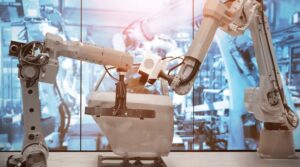
Should you outsource your 3D printing tasks or buy 3D printers in-house?
With 3D printing completely transforming the way products are designed, prototyped, and produced, companies increasingly integrate the technology into their manufacturing processes. However, in doing so, many organizations face the challenge of utilizing 3D printing in-house or outsourcing to an expert 3D printing service provider such as Objectify Technologies.
Although, there is no one-size-fits-all approach: both options have their pros and cons, and the choice ultimately depends on the goals of your organisation.
In this article, we will break down the options for you in simple terms to help you make a better choice.
Why companies outsource a 3D printing service?
Outsourcing projects to a 3D printing service provider is one of the best ways for any company looking to get the benefits of 3D printed parts for the first time. This can be proved to be an amazing learning experience that will allow teams to explore material options, assess complicated design for manufacturing, analyse the comparative strength of 3D printed parts vs. the traditional parts, and validate the importance of the technology in manufacturing workflow.
As with every outsourcing project, the manufacturing burden is reduced; however, the management oversight and internal control are also reduced. The outsourced 3D printed parts should be carefully analysed. The choice of the outsourcing partner plays a vital role. Further, because of the higher costs of utilizing a 3D printing service, teams are probably be limited with options for what they will print.
Outsourcing 3D printing projects will improve the lead times, cut down the margins, and demand the quality to be tracked regularly as 3D printing is still not completely standardized.
Pros:
- Easiest for organizations with no background in 3D printing
- Access to a comprehensive range of materials
- Access to technology experts for developing new products
- Get access to a broad range of 3D printing technologies
- Eliminates upfront capital equipment investment
Cons:
- Cost per part increases because of the addition of the outsourcing partner
- Takes more time to iterate and execute those iterations
- Slower than other buying options
- Gets more expensive with each iteration and modification
- Less training sessions for designers and engineers of the client
- May involve procurement blockers for each model and slowing down the process
An Alternate Solution: In-House 3D Printer
An in-house 3D printer can revolutionize your design strategy and can even be utilized to manufacture different parts. There are many benefits and drawbacks to your company owning a 3D printer. Here are some of them:
Pros:
- A broad range of high-performance materials is available
- When fully implemented, it’s quicker than utilizing third-party service providers
- Cost-effective option (when printing in large batches)
Cons:
- Requires huge capital investment
- Requires skilled labor to operate
- Needs ample space and a clean environment to function efficiently
- Costs not sustainable by short batch manufacturing
- Not an ideal choice for an organization just trying to explore 3D printing technology
Before finalizing a 3D printing solution, ask yourself some questions like what you need the parts for? Visual display? Functional prototyping? Casting into end products?

What are your options for buying an in-house printer?
Buying a Desktop 3D Printer
Usually, purchasing a desktop 3D printer in-house is an excellent option for companies exploring 3D printing technology for prototyping projects. The 3D printers have a shorter learning curve and are cost-effective for all organizations.
Further, numerous 3D printers can be incorporated and controlled simultaneously via printer management applications if the prototyping job increases over time. They can additionally be efficiently monitored and controlled remotely.
Pros:
- Cost-effective option for companies of all sizes
- Delivers high-quality output
- Shorter learning curve
- Decreases the prototyping costs and time
- Offers greater flexibility
- Can be handled and operated with minimum training
- Affordable materials and readily available across the globe
- Numerous materials can be printed on one platform
- Easy to track and control, even remotely
Cons:
- Some desktop 3D printers cannot work with high-performance materials
- Size restrictions may be limiting
- Employee training is required (relatively lower than industrial 3D printer training)
- May not be the ideal choice for mass production, depending on the platform
Conclusion: buying in-house vs. outsourcing to 3D printing service provider
Choosing to buy in-house 3D printers or outsourcing to a reputed 3D printing service company should depend on your specific project goals.
However, outsourcing 3D printing jobs is cost-effective and saves a lot of time. A skilled design and engineering team has all the equipment, knowledge, and labor to cater to your needs. They can give you the best suggestions and advice on what materials to use and how to approach your production design.
At Objectify Technologies, we offer exceptional engineering and design services to clients from various industries and areas. Our 3D printing services help create proof-of-concept, prototypes, and end-products for businesses and individuals. Our proven techniques help build a 3D model layer by layer to help you visualize your products and concepts.
Talk to Objectify Technologies 3D printing expert today


